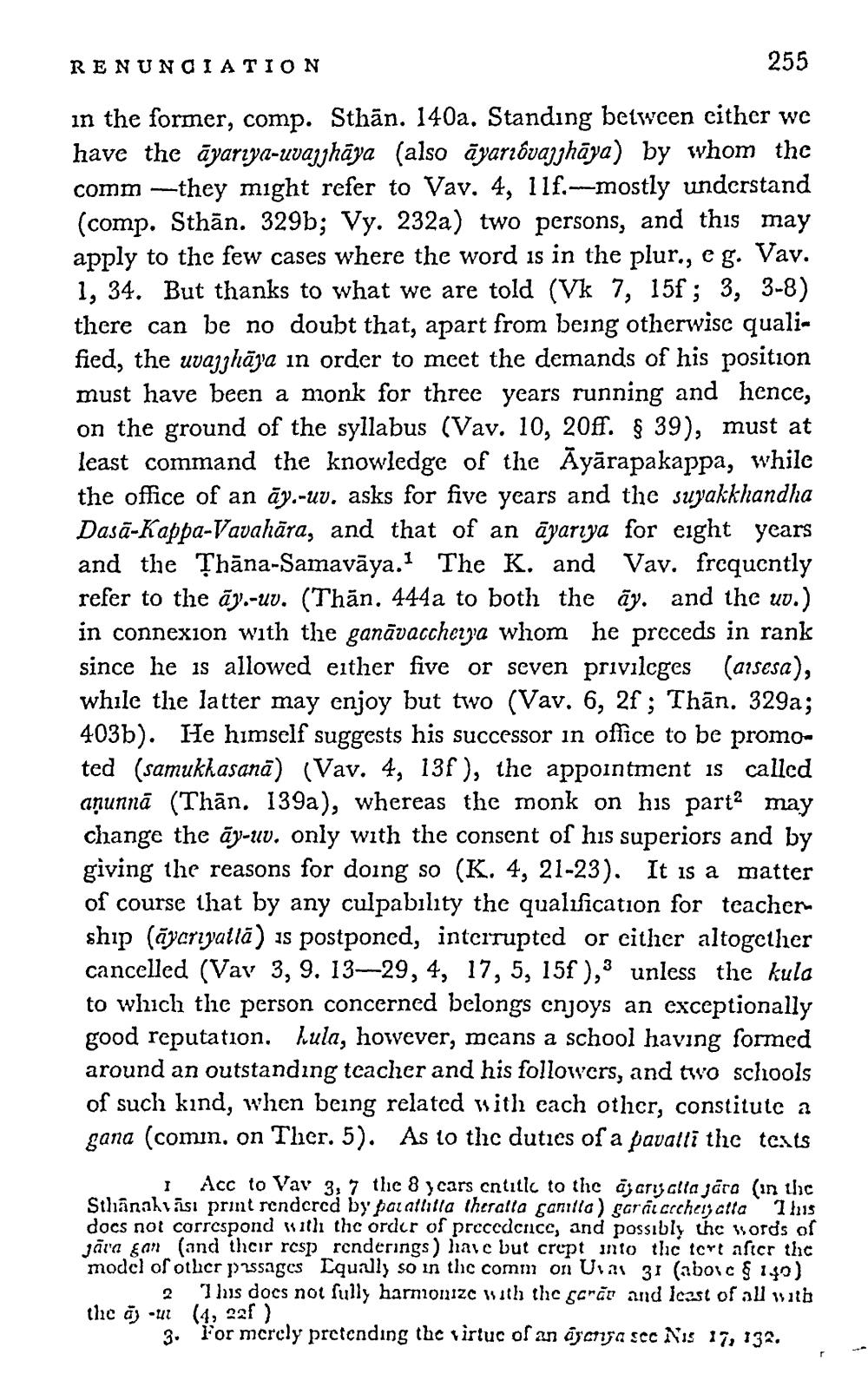________________
RENUNOIATION
255
in the former, comp. Sthān. 140a. Standing between cither we have the āyarıya-uvajghāya (also āyarıôvajghāya) by whom the comm --they might refer to Vav. 4, 11f.-mostly understand (comp. Sthān. 329b; Vy. 232a) two persons, and this may apply to the few cases where the word is in the plur., eg. Vav. 1, 34. But thanks to what we are told (Vk 7, 15f; 3, 3-8) there can be no doubt that, apart from being otherwise qualified, the uvajghāya in order to meet the demands of his position must have been a monk for three years running and hence, on the ground of the syllabus (Vav. 10, 2011. § 39), must at least command the knowledge of the Āyārapakappa, while the office of an ay.-uv, asks for five years and the suyakkhandha Dasā-Kappa-Vavahāra, and that of an ayarıya for eight years and the Thāna-Samavāya.1 The K. and Vav. frcqucntly refer to the āy.-uv. (Thān. 444a to both the āy. and the uv.) in connexion with the ganāvacchezza whom he preceds in rank since he is allowed either five or seven privileges (aisesa), while the latter may enjoy but two (Vav. 6, 2f; Thān. 329a; 403b). He himself suggests his successor in office to be promoted (samukkasana) (Vav. 4, 13f), the appointment is called aņunnā (Thān. 139a), whereas the monk on his part2 may change the āy-uv. only with the consent of his superiors and by giving the reasons for doing so (K. 4, 21-23). It is a matter of course that by any culpability the qualification for teacher ship (āyariyatlā) is postponed, interrupted or cither altogether cancelled (Vav 3, 9. 13-29, 4, 17, 5, 15f),, unless the kula to which the person concerned belongs cnjoys an exceptionally good reputation, hula, however, mcans a school having formed around an outstanding teacher and his followers, and two schools of such kind, when being related with cach other, constitute a gana (comin. on Ther. 5). As to thc duties of a pavaltī the texts
I Acc to Vav 3, 7 the 8 y cars cntitlc to the ag an alla gara (in the Sthanakyası print rendcrcd by par atlitla theralla ganilla) gará cochealla Thuis docs not correspond with the order of prcccdcncc, and possibly the words of jāra gan (and their resp renderings ) haic but crept into thic icrt after the modcl of other passages Equally so in the common Ui? 31 (aboic & 140)
2 huis docs not fully harnionize with the carar and lcast of all with the ag -ut (4,221)
3. For mcrcly pretending the virtuc of an aganiga sec Nis 17, 132.




